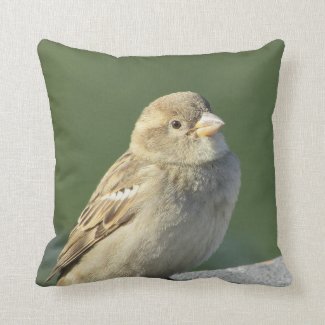Several months ago, I mentioned that I have a greater appreciation for nature in my own backyard when I return from a trip. Not seeing all the common sights around my home during a trip makes me more aware that what might be common for me, isn't common everywhere. Since I have not been traveling much or really at all right now, it might be simple to slip back into a mindset of taking wildlife for granted if it were not for my Twitter account. I know that many have a poor experience on social media in general but I have to say that I have experienced no issues with Twitter. My followers and those I follow are mostly those into nature and my feed is filled with plants, animals, and landscapes from around the world. Someone recently tweeted a photo of a bird very common to his area yet I had never seen anything like it before. So for anyone who is not familiar with the common wildlife in Arizona, I am going to reveal the most common desert sightings.
Sparrows
I start with the beautiful little sparrows. Next to doves, they are the most common bird that I see year-round whether in my yard or out on a hike. These little guys flock to my feeder and playfully flap from branch to branch waiting for a turn for some seed. They will hop on the ground pecking away hoping to catch some seed that has fallen. In the open desert, these little guys will quickly fly from bush to bush not remaining in the open for very long. I will occasionally see them flying a greater distance to get to a taller tree branch or another place they deem safer but usually, they are fast flyers for short distances.
Bunnies
Desert hares and jackrabbits are extremely common in the desert. The desert hare with their very long ears can be seen hopping their way across the desert floor and tend to freeze if they are near cover or I suppose assume that I can not see them. They will occasionally take off at a fast hop but my chances are greater of snapping a photo of a desert hare than a jackrabbit. I see jackrabbits on my hikes but it is very rare for me to grab a photo of one. They have exceptionally long legs and take off at a rapid hop at the first sign of danger. Most of the time, I don't even know they are present until a jet of brown fur takes off from under a bush along the path. They are adorable, they are fast, and they are everywhere in the deserts of Arizona.
Cacti
You might have assumed that this one was coming but cacti (plural of cactus) are everywhere in the deserts of Arizona. So many different types, sizes, and shapes of cacti can be found in the desert, in the city, and in neighborhoods. Many of my neighbors have towering saguaros in their front yards, and cacti are commonly used in a variety of desert home landscaping.
A cactus plant is such a common sight for me every day that I will often overlook them completely until they burst into bloom in the spring or fall. You might not think that there is much variety from one cactus plant to another but you will be surprised to hear that cacti are actually quite varied. Most cacti are green with large spikes but some have no spikes at all while others are purple in color.
As I was reminded this past week, what is common for me isn't common for everyone. I hope that you enjoyed some of the animals and plants that I tend to take for granted every day. Beautiful plants and animals can be found everywhere we look but at times we need to remind ourselves to look at our surroundings with fresh eyes to truly understand the beauty right in front of us. If you would enjoy seeing plants, animals, and landscapes from Arizona, consider following me on Twitter for nature photos and positivity posted daily.





Comments